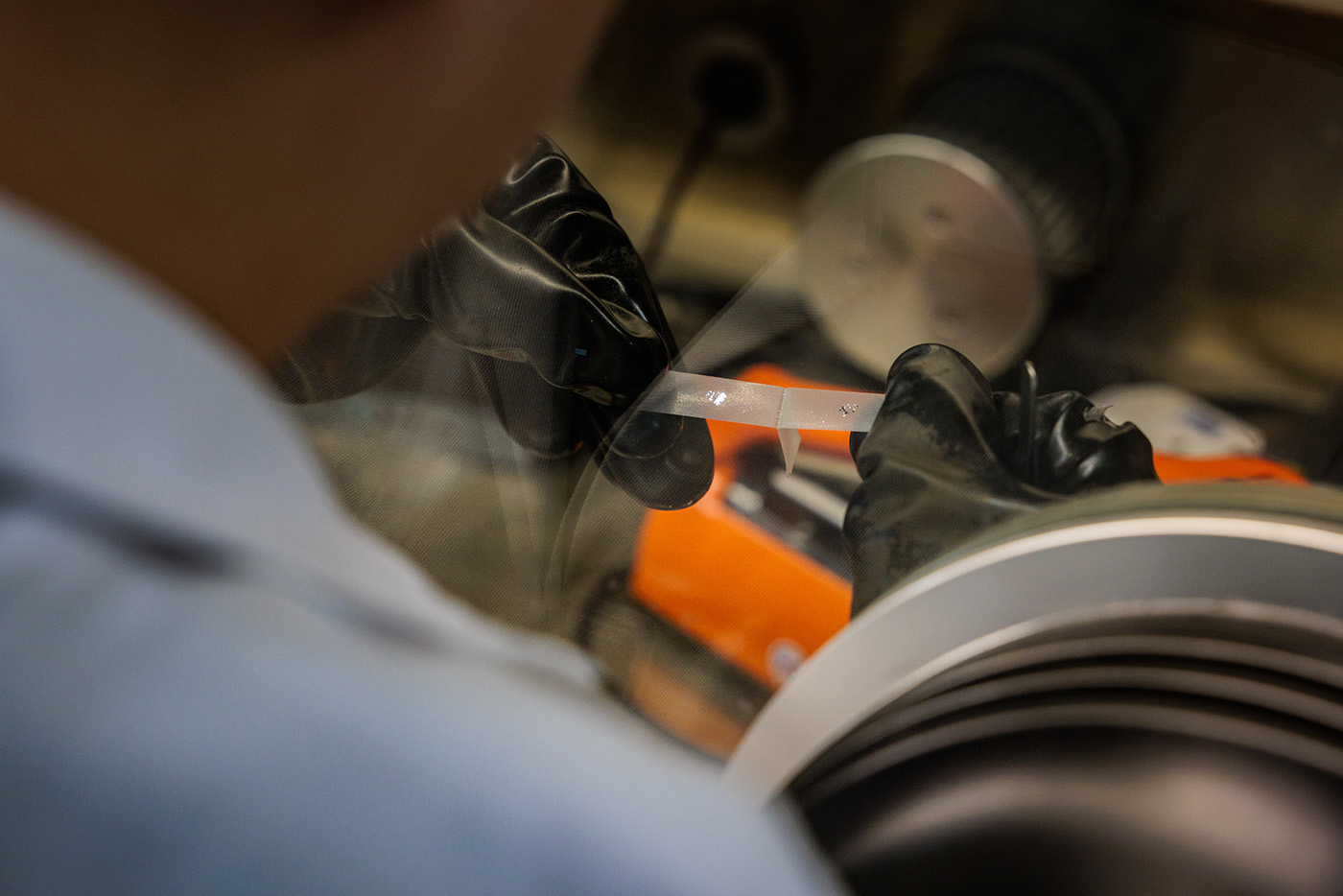Highlights
Spins line up for quantum sensing
 The sensing ability of hexagonal boron nitride comes from defects in the crystal layers.
The sensing ability of hexagonal boron nitride comes from defects in the crystal layers.
Tiny flakes of a material called hexagonal boron nitride (h-BN) might help in future to read magnetic signals from your body. That’s one potential application of quantum sensors made from the two-dimensional (2D) material, which a team led by CQT Principal Investigator Gao Weibo has shown can be primed to sense magnetic fields.
The advance by the international team concerns precise control and manipulation of spins at defects in a 2D layer of h-BN. Their results are published on 24 June 2024 in Physical Review Letters and highlighted as an Editors’ Suggestion. The paper’s co-authors are based in Singapore, China, Japan and Germany.
2D materials are promising for quantum sensing because they can be placed directly on a sample. This small distance means they can be sensitive to even the smallest magnetic signals and map their differences across the surface. They are also easy to fabricate.
Weibo’s team at the Nanyang Technological University, where he is President’s Chair Professor in Physics, received chunks of h-BN from their collaborators in Japan. They ‘exfoliated’ the crystal, removing 2D flakes containing just a single layer of atoms, using tape.
In h-BN, typically each boron atom is bonded to three nitrogen atoms in the crystal lattice. If a boron atom is missing, the gap in the lattice is known as a boron vacancy defect. The team created such defects by bombarding the material with protons.
“We considered if the defects would be similar to the nitrogen-vacancy (NV) centres in diamond,” said CQT Research Fellow Ru Shihao who is first author of the publication. “If these defects kept some spin properties that we can control, we could do quantum sensing using these materials.”
Shihao was visiting Weibo’s group as a PhD student from China when he worked on this project. He is now a Research Fellow in a different CQT group.
Defect structure
NV centres in diamond have spin properties that are already exploited for quantum sensing, but diamond cannot be made as thin as a 2D material. That raises hope a 2D material could be more sensitive to small signals and offer better spatial resolution.
The question for the team was whether they could control and measure the nuclear spins at defects in h-BN. That’s necessary for the material to be used for sensing.
The goal is high nuclear spin polarisation: when the nuclear spins of the material are aligned in the same direction, it becomes easier to detect when the spins change due to an external magnetic field.
The researchers found that they could apply a technique known as ‘ground state level anti-crossing’ (GSLAC) to achieve robust nuclear spin polarisation levels in h-BN. The boron vacancy defect in h-BN has a negatively charged electron. The nuclear spin states in h-BN arise due to the interaction between the spin of the defect’s electron and the nuclear spins of the surrounding nitrogen atoms. The electrons have to be in the same nuclear spin state to achieve a high nuclear spin polarisation.
Shihao says, “The most important part for this work is to understand the physical system.”
Getting the electrons into the same nuclear spin state is difficult as there are no direct transitions between different states. This changes with GSLAC.
GSLAC involves applying a magnetic field to the material. As the magnetic field is tuned, the different ground state energy levels mix and become almost degenerate. This makes it easier for the electrons to transfer from one nuclear spin state to another, achieving higher nuclear polarisation.
More time at the ground state
In their work, the researchers compared GSLAC to another technique, excited state level anti-crossing (ESLAC). The latter method is similar to GSLAC except that it occurs when the excited energy levels mix. The researchers applied a magnetic field of about 154.6 mT for GSLAC and 74.9 mT for ESLAC.
Using GSLAC, the researchers record nuclear polarisation levels of about 0.225 and 0.17 for laser powers of 150 mW and 1.5 mW respectively. These levels are substantially higher that the polarisation levels achieved by ESLAC, which are 0.0655 and 0.0343 for laser powers of 150 mW and 1.5 mW respectively. All their measurements were done at room temperature.
“The excited state’s lifetime in this system is only 1 to 2 ns,” says Shihao. “The electrons have more time if we use GSLAC to transfer from one nuclear spin state to another.”
Aligning the spins like this would be a first step for using the material in quantum sensing, such as for biological samples or to measure the properties of materials. The high sensitivity and resolution of quantum spin-based sensors had led to proposals they be used for biological applications from measuring single cells to monitoring brain activity via wearable sensors.
Among the team’s next goals is to make the material more practical for quantum sensing. “We will work on reading out the signal electronically. Now we read it optically, but electronics can be more compact,” says Weibo.







